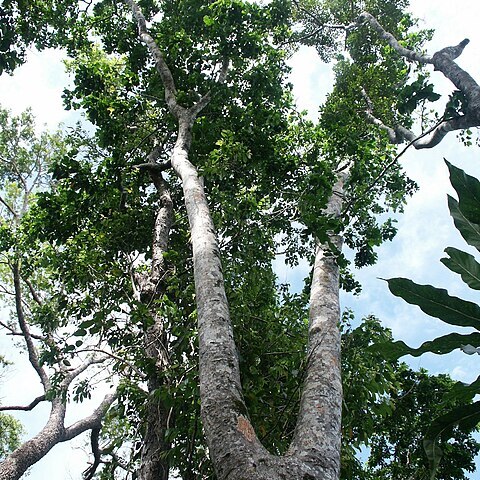Unarmed evergreen trees. Leaves simply paripinnate; stipules connate into a persistent intrapetiolar scale; petiolules twisted; leaflets opposite or subopposite, without translucent gland-dots, but glandular as in Afzelia on the leaflet surface on one or both sides of the base. Inflorescences simply racemose to paniculate; flowers spirally arranged along the inflorescence-axes; pedicels jointed at base; bracteoles ± well-developed and concavo-convex, ± concealing the young flower-buds; both bracteoles caducous before the flower opens. “Hypanthium ± elongate. Sepals and petals as in Afzelia. Stamens 3 fertile and 4–7 staminodes (fide Meijer Drees). Ovary as in Afzelia. Pods indehiscent or ultimately ± dehiscent; valves woody, but much thinner than in Afzelia, and ± venose outside. Seeds large, hard, exarillate.
Unarmed, evergreen trees. Leaves simply paripinnate; petiolules twisted; leaflets opposite or subopposite, without translucent gland dots, but usually with a dot-like gland on one or both sides of the base on the lower surface or on the margin. Stipules connate into a persistent intrapetiolar scale. Inflorescences simply racemose to paniculate. Flowers bisexual, spirally arranged along the inflorescence-axes; pedicels jointed basally; bracteoles ±concealing the young flower buds but falling before flower opens. Hypanthium ±elongate. Sepals 4, imbricate. Petal 1, large, clawed, the others rudimentary or absent. Fertile stamens 3; staminodes 4-7. Ovary stipitate; stipe adnate to the hypanthium; style long; stigma ±capitate. Pods indehiscent or ultimately ±dehiscent; valves woody. Seeds exarillate.

